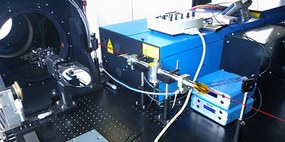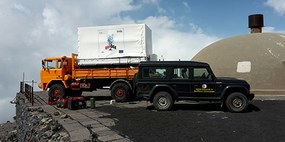Environment: Laser radar BILLI “reads” volcanic fumes
20/10/2016
The Laser radar BILLI, developed by ENEA to analyse volcanic fumes, has also been successfully tested on the Etna Volcano. At an altitude of 2850 meters and 1.5 kilometers away from the main crater, this sophisticated technology measured the concentration of carbon dioxide of the fumes, an important clue to predict volcanic eruptions. A similar test had been conducted in Stromboli in 2015.
 “The technology developed at ENEA, once automatized, will be able to issue early warning of volcanic eruptions even in absence of earthquake swarms- Luca Fiorani of the ENEA Frascati Diagnostics and Metrology Laboratory, where BILLI was developed, explained”.
“The technology developed at ENEA, once automatized, will be able to issue early warning of volcanic eruptions even in absence of earthquake swarms- Luca Fiorani of the ENEA Frascati Diagnostics and Metrology Laboratory, where BILLI was developed, explained”.
“The technology was tested on top of the Etna -Fiorani went on- a difficult and hostile environment with temperatures that can go below zero even in summer and reach around 10°C during the day. And then rain, a AMBIENTE ACIDO, dust and humidity, potential threats to the equipment”.
 BILLI is based on a complex technology allowing to remotely measure the concentration of carbon dioxide in vulcanic fumes, an operation that is complex, slow and dangerous if conducted with traditional techniques. Thanks to a system of mirrors, the laser beam can be oriented in any direction, providing three -dimensional images, similar to a tomography, of the volcanic plume.
BILLI is based on a complex technology allowing to remotely measure the concentration of carbon dioxide in vulcanic fumes, an operation that is complex, slow and dangerous if conducted with traditional techniques. Thanks to a system of mirrors, the laser beam can be oriented in any direction, providing three -dimensional images, similar to a tomography, of the volcanic plume.
ENEA has developed this type of laser radar, or lidar, under the European project BRIDGE (Bridging the gap between gas emissions and geophysical observations at active volcanoes) of the European Research Council, coordinated by Alessandro Aiuppa of the University of Palermo, with the aim of improving modelling of volcanic eruptions in order to be able to alert the population far in advance.
For more information please contact: luca.fiorani@enea.it
